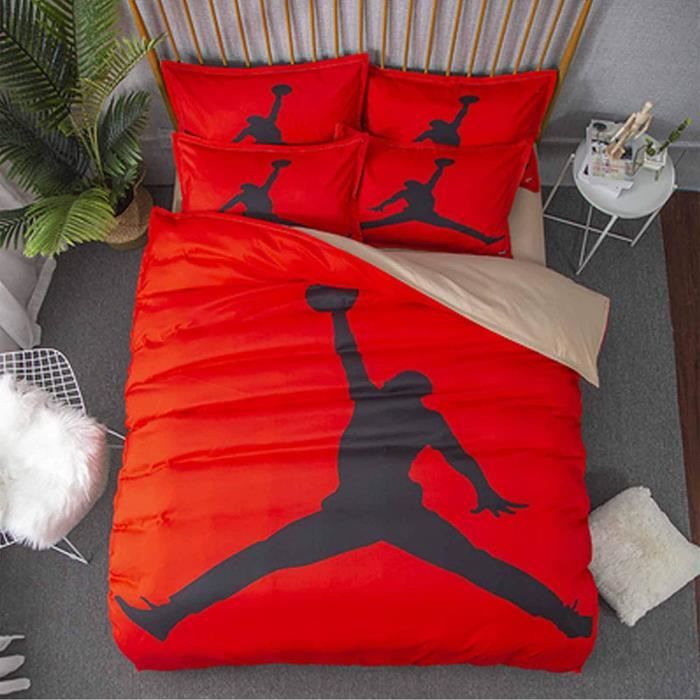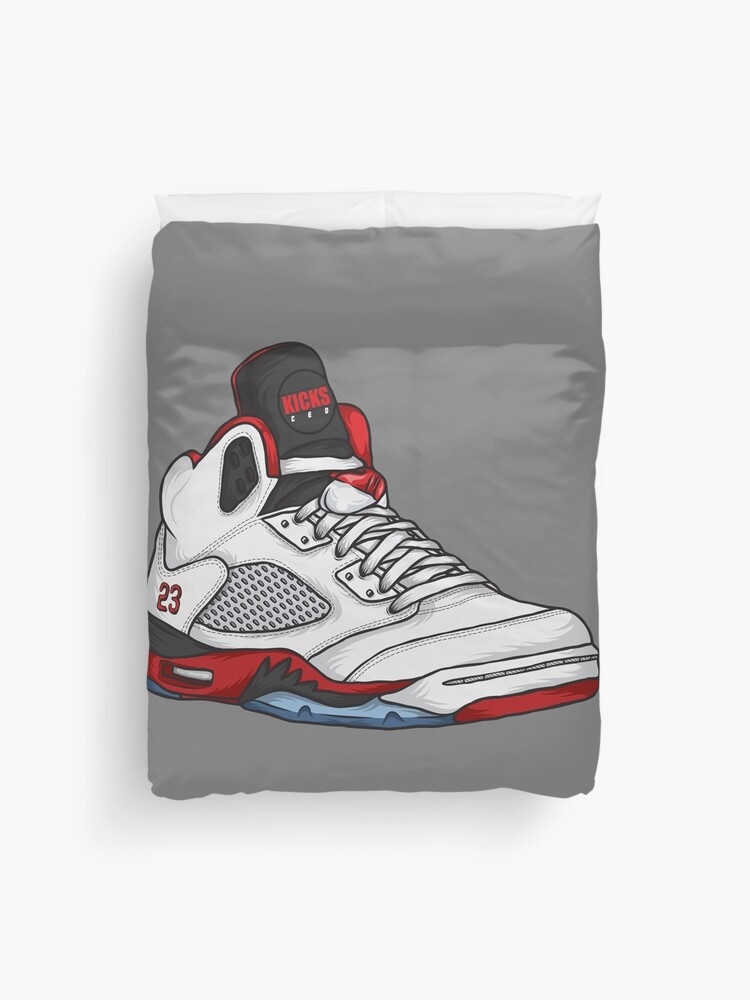
Ensemble De Housse De Couette Basketball Michael Jordan Ensemble De Literie Pour Enfants, Taille Unique, Dessin Animé Multicolore, Enfants Garçons Et | freixenet.com

Parure de lit style Jordan rétro, ensemble de literie 100% coton, housse de couette, café, king size | AliExpress

Michael Jordan 3D Parure De Lit pour Enfants 3 Pièces Stars du Basket Parure- Housse De Couette Réversible Et Taie D'Oreiller Housses De Couette en Microfibre Brossée Douce King(220x240cm) : Amazon.com.be: Cuisine

Parure De Lit Style Jordan Rétro, Ensemble De Literie 100% Coton, Housse De Couette Rouge, King Size - Literie Ensemble - AliExpress

Basketball thème Jordan Imprimé Parure de lit de Marque: 1 piece Housse de couette + 2 piece Taie d?oreiller Polyester Parure de couette -PM300358 | Rakuten

Basketball thème Jordan No.23 Imprimé Parure de lit de Marque: 1 piece Housse de couette + 1 piece Drap plat + Taie d'oreiller Velours de cristal Parure de couette -PM300360 | Rakuten

Ensemble De Housse De Couette 3 Pièces Fashion Basketball Michael Jordan Ensemble De Literie pour Enfants Adolescents sur Mesure Design Quilt Cover Et Taie d'oreiller (220x240cm(1.8M Bed),Dunk) : Amazon.fr: Cuisine et Maison

Wresetly Michael Jordan Housse De Couette Ensemble De Housse De Basket NBA Couette Imprimé 3D Taie d'oreiller Microfibre Parure De pour Enfants Adolescents Double(200x200cm) : Amazon.com.be: Cuisine et maison

PARURE DE COUETTE QGGQ Bulls Jordan 23 Housse de Couette Star du Basket de Quatre piegraveces lit Ensemble de draps Literie Lite840 - Cdiscount Maison

DYPHOR Michael-Jordan Parure De Lit Double(200x200cm) 3 Pièces,Parure De Sport Lit À Basketball Star,Motif Esthétique, 100 % Microfibre Douce Et Agréable : Amazon.com.be: Cuisine et maison

Glamifirsto Michael Jordan Parure de lit avec housse de couette sur le thème de la NBA - Motif basketball 3D - Cadeau pour enfants - Décoration de chambre : Amazon.com.be: Cuisine et maison

CHAOSE Ensemble De Housse De Couette Basketball Michael Jordan Ensemble De Literie pour Enfants, Taille Unique, Dessin Animé Multicolore, Enfants Garçons Et Filles (220x240cm(1.8M/2MBed),Dunk) : Amazon.fr: Cuisine et Maison

HOUSSE DE COUETTE ET TAIES ike Housse de Couette 240x260 cm Michael Jordan Parure de Lit 2 Personnes avec Fermeture Éclai854 - Cdiscount Maison

Ensemble De Housse De Couette Basketball Michael Jordan Ensemble De Literie Pour Enfants, Taille Unique, Dessin Animé Multicolore, Enfants Garçons Et Filles (220x240cm(1.8M/2MBed),Fantôme noir) : Amazon.fr: Cuisine et Maison

HOUSSE DE COUETTE ET TAIES nsm Housse de Couette 220x240 cm Michael Jordan Parure de Lit 2 Personnes Sets de Housse de Couettes 350 - Cdiscount Maison
![Space Jam Parure de lit avec housse de couette et taie d'oreiller Motif Michael Jordan Basketball 135x200cm[165] - Cdiscount Maison Space Jam Parure de lit avec housse de couette et taie d'oreiller Motif Michael Jordan Basketball 135x200cm[165] - Cdiscount Maison](https://www.cdiscount.com/pdt2/0/9/9/1/700x700/auc8251617242099/rw/space-jam-parure-de-lit-avec-housse-de-couette-et.jpg)
Space Jam Parure de lit avec housse de couette et taie d'oreiller Motif Michael Jordan Basketball 135x200cm[165] - Cdiscount Maison

wrtgerht Michael Jordan Housse de couette imprimée 3D de la NBA en microfibre douce avec fermeture éclair pour lit king size (220 x 240 cm) : Amazon.com.be: Cuisine et maison








![Housse de Couette Parure de Lit Jordan Basket Motif 3D 140x200cm[1] - Cdiscount Maison Housse de Couette Parure de Lit Jordan Basket Motif 3D 140x200cm[1] - Cdiscount Maison](https://www.cdiscount.com/pdt2/0/0/8/1/700x700/auc8419976600008/rw/housse-de-couette-parure-de-lit-jordan-basket-moti.jpg)
